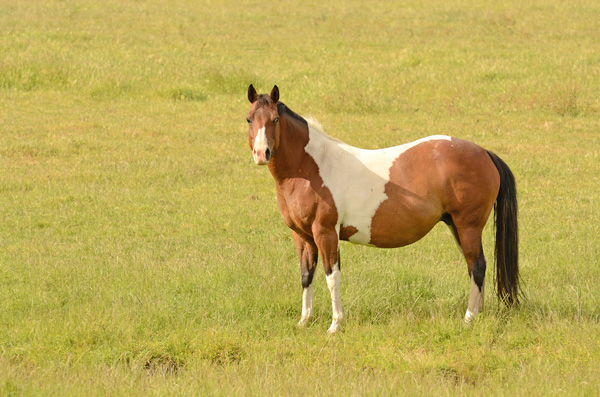
Researchers at the University of Kentucky have been studying the flora (good and bad bacteria) and colonization of the GI tract of foals and adult horses. In this article, Laurie Lawrence, PhD, of the Department of Animal and Food Sciences, and Michael Flythe, PhD, a Research Microbiologist with USDA-ARS at the University of Kentucky, help you understand the “bugs” in the equine GI tract.
In foals the colonization of the GI tract by pathogenic organisms can lead to diarrhea. Considerable research has focused on identifying the organisms responsible for neonatal diarrhea, but less effort has been made to identify the factors that allow the pathogenic organisms to become established. Additionally, very little is known about how or when the normal GI flora becomes established in the foal.
Researchers at the University of Kentucky have been studying the development of digestive capacity in foals for several years. An initial project indicated that very young foals have a low capacity for fiber digestion but older foals have a capacity similar to their dams. Because fiber digestion is performed by specific bacteria in the large intestine, these observations suggest that foals develop a normal microbial population in their GI tract by at least 1 or 2 months of age.
In the past, study of the GI flora has been limited by the availability of accurate, economical, and relatively time-efficient laboratory methods. New molecular techniques are now being developed that will facilitate the study of the equine flora and hopefully enhance researchers’ knowledge of this important part of equine health. For instance, researchers at UK have recently used an analysis called denaturing-gradient-gel-electrophoresis (DGGE) to compare the similarity between the fecal flora of neonatal foals and their dams from birth through about 12 weeks of age.
Because most of the microbial population of the horse’s GI tract resides in the large intestine, feces are an accepted and noninvasive substitute for actual large intestinal contents. With DGGE, researchers isolate microbial metagenomic DNA from the feces and amplify it by polymerase chain reaction (PCR). The resulting amplicons are then separated on a gradient gel to produce a banding pattern that represents the diversity of the microbial community. The number and placement of the bands are distinctive to the community sampled.
On the first day after foaling researchers observed that the similarity between the microbial DNA in mare feces and foal feces was low. However, the similarity rapidly increased, and by two weeks of age foals appeared to have similar microbial populations in their feces as the mares. None of the foals in this study suffered from pathogenic diarrhea, so these observations suggest that the foal’s gastrointestinal tract is colonized by normal microbes within a few days of birth.
Several questions remain in UK’s study of the colonization of the foal’s GI tract. It is unknown whether a failure of the normal flora to colonize the gastrointestinal tract increases the foal’s susceptibility to pathogenic diarrhea. If so, strategies to enhance normal flora development might be beneficial to the foal. The research group examined the effect of a prebiotic on the incidence of diarrhea in foals in a two-year study. In the first year prebiotics tended to decrease the number of days foals were treated for diarrhea. However, in the second year there was a low incidence of diarrhea in both treatment groups (control and prebiotic-treated), and, therefore, no significant effect of the prebiotic was noted.
In the future researchers hope to study the effects of both prebiotics and probiotics on GI flora development in the foal. In addition they would like to identify the normal progression of microbes that colonize the foal’s gastrointestinal tract in the first few days of life.
Prebiotics and Probiotics
Prebiotics and probiotics are used for a similar purpose: to optimize the microbial community of the gastrointestinal tract. However, they have different mechanisms of action.
A prebiotic is a substance that provides nutrients to specific and desirable microbes in the digestive tract. Common prebiotics are various types of fermentable compounds (usually carbohydrates). The goal of a prebiotic is to stimulate the growth of beneficial organisms that already inhabit the gastrointestinal tract, particularly the large intestine.
A probiotic contains live organisms, such as Lactobacillus or other microbes. The goal of the probiotic is to introduce beneficial organisms to the gastrointestinal tract. To be effective, the probiotic organisms must be alive at ingestion and must be able to live in the gastrointestinal tract.


